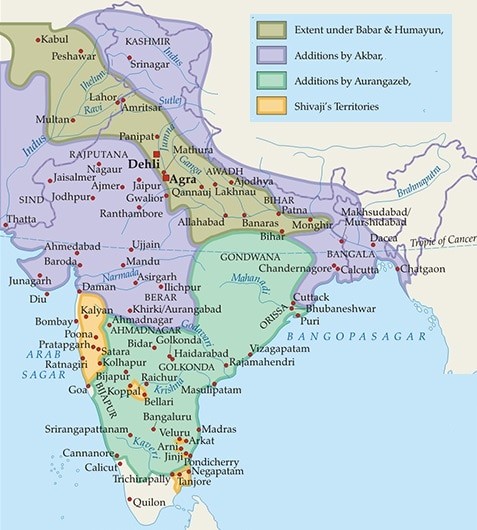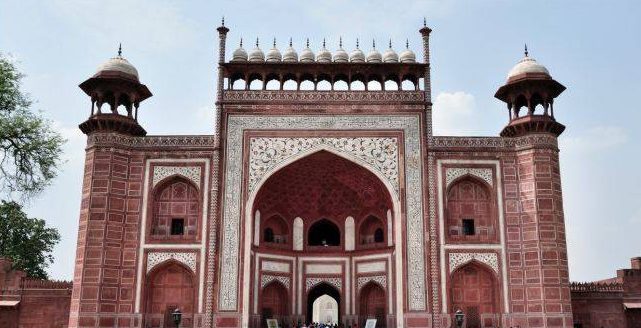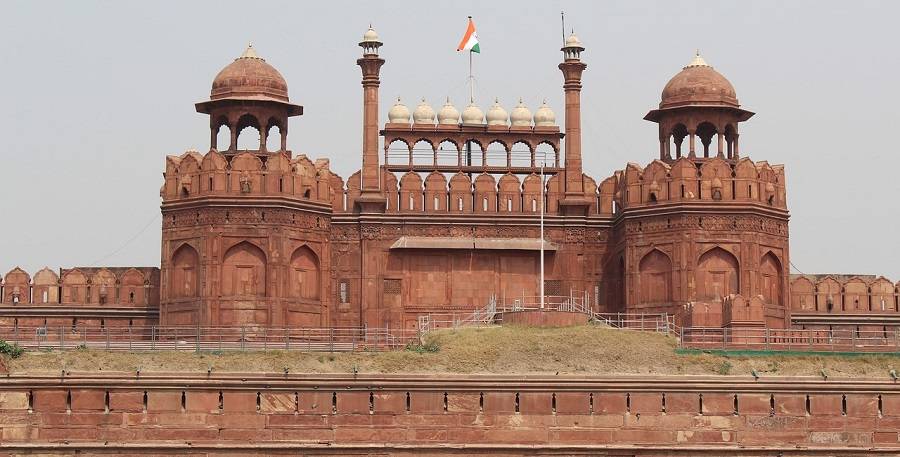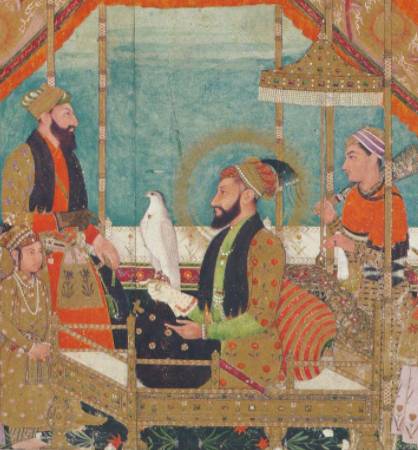March 10, 2019
Mughal Empire & Sur Dynasty
Contents
>>>>>>>
>>>>>
Babur (1526-30)
- Mughals belonged to a branch of the Turks called Chagatai.
- It named after the second son of Genghis Khan.
- Babur is the founder of the Mughal Empire in India.
- He was a descendant of Timur (on his father’s side) and Genghis Khan (on his Mother’s side).
- Original name of Babur was Zahiruddin Muhammad.
- Babur became the ruler of Farghana (Chinese Turkistan).
- His father was Umar Shaikh Mirza.
- Daulat Khan Lodi (Governor of Punjab), Alam Khan, and Rana Sanga of Mewar invited Babur to invade India.
- That time Babur was ruler of Kabul.
- He undertook four expeditions to India, between 1519 and 1523.
- On 21st April 1526, Babur defeated Ibrahim Lodi in the first Battle of Panipat.
- Babur introduced artillery in the battle of Panipath.
- In 1527, Rana Sangha, met and defeated by Babur in the Battle of Khanwa, a village near Agra.
- Then, Babur took on the title of “Ghazi”.
- In 1528 Battle of Chanderi was won by Babur over Medini Rai, the Rajput ruler of Malwa.
- Babur defeated allied Afghans of Bihar and Bengal under Muhammad Lodhi in the Battle of Ghaghra, near Patna in 1529.
- In 1530, Babur died at Agra aged 40.
- His body was taken to Kabul, where it was buried.
- He wrote his memoirs, in Turki language Tuzuk-i-Babri / Babarnama and also wrote Masnavi.
>>>>>>
>>>>>>>>
Humayun (1530-40)
- Humayun besieged the fortress of Kalinjar in Bundelkhand.
- He defeated Bahadur Shah of Gujarat.
- Sher Shah Suri defeated him in the Battle of Chausa, in 1539.
- In 1540, in the Battle of Bilgram also known as Battle of Kanauj, Humayun defeated by Sher Shah Suri and lost his kingdom.
- Humayun became an exile for the next fifteen years.
- In 1952, during his wanderings in deserts of Sindh, Humayun married Hamida Banu Begum, daughter of Sheikh Ali Amber Jaini.
- On Nov 23, 1542, Humayun’s wife gave birth to Akbar at Amarkot.
- Shah of Persia lend him a force of 12,000 men.
- In 1545, Humayun captured Kandhar and Kabul from his brothers Kamran and Askari.
- In 1555, Humayun defeated the Afghans and recovered the Mughal empire throne.
- After six months, he died in 1556 due to his fall from the staircase of his library.
- Bairam Khan, helped him come back to India.
- His half-sister, Gulbadan Begum, wrote Humayun-nama.
- Humayun built a new city at Delhi which he named Dinapanah.
- He constructed the Jamali mosque and mosque of Isa Khan at Delhi.
- Humayun’s tomb is called the prototype of the Taj Mahal, and was built by his widow Haji Begum.
- Persian painters, Mir Sayyid Ali and Abdus Samad, was his court painters.
>>>>>>>
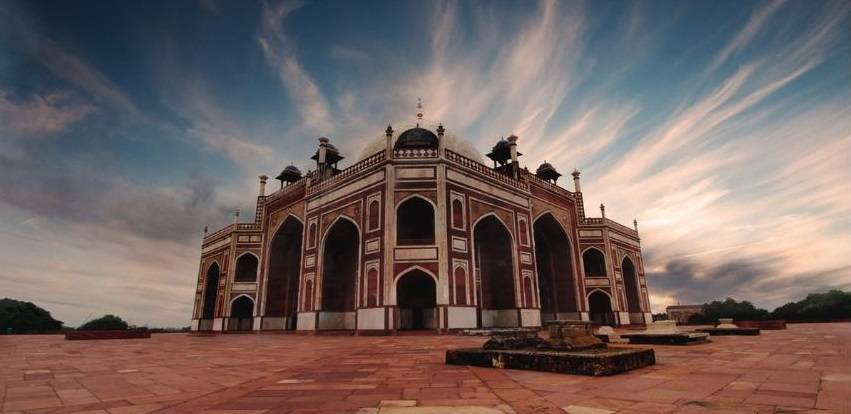
>>>>>>>
Sur Dynasty
Sher Shah Suri (1538–1545)
- Sher Shah Suri founded the Sur dynasty and the second Afghan Empire after Lodhis.
- His original name was Farid.
- Farid served under the Afghan governor of Bihar, Bahar Khan Lohani.
- Bahar Khan gave him the title Sher Khan for his bravery (as he killed a tiger).
- Sher Shah Suri defeated Sultan Mahmud Shah of Bengal in the Battle of Surajgarh.
- He adopted the title of Sher Shah Suri after defeating Humayun in the Battle of Chausa in 1539.
- Sher Shah Suri defeated Maldeo in the famous Battle of Samel around Ajmer (1544).
- His last campaign was against Kalinjar, Bundelkhand.
- In that campaign he died from an accidental explosion of gun powder in 1545.
- Sher Shah Suri built the Purana Qila (Old Fort), Sher Mandal.
- He also built his own mausoleum at Sasaram.
- Malik Mohammad Jaysi completed his Padmavat during the reign of Sher Shah Suri.
- Abbas Khan Sarwani, wrote the Tarikh-i-Shershahi during his reign.
- Sher Shah Suri was succeeded by his son Islam Shah (Jalal Khan).
- Islam Shah died in 1553 and the Afghan empire was weakened.
>>>>>>
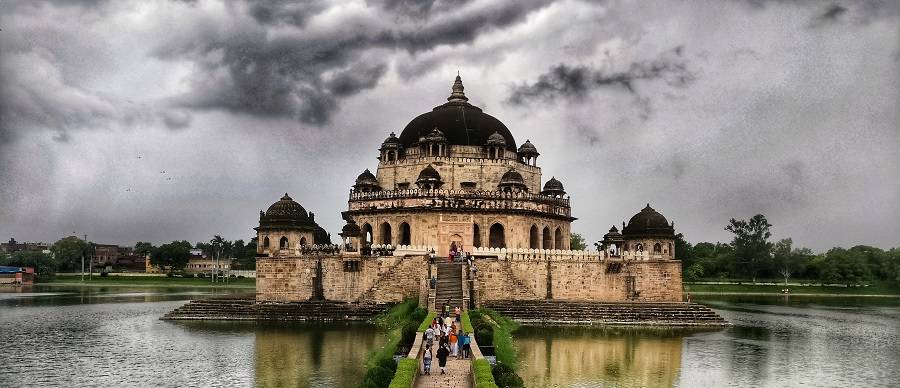
>>>>>>
Sher Shah Road / Highways
- Sonargaon to Sind: Sher Shah Suri restored the old imperial road (the Grant Trunk road by Ashoka) and also restored the Uttarapatha which connected Tamralipti (Bengal) to Purushpur (Peshawar).
- Agra to Burhampur.
- Jodhpur to Chittor.
- Lahore to Multan.
>>>>>>>
Local Administration of Sher Shah Suri
- Empire of Sher Shah Suri was divided into 47 sarkars.
- Those sarkars was under shiqdar-i-shiqdaran (law and order) and munsif-i-muwifan (local revenue and civil justice).
- Division of the sarkars into parganas.
- Division of the parganas into Mauza (villages), under headmen.
- Sher Shah Suri divided the executive functions thus ensuring balance of power.
>>>>>>>
Revenue Administration
- Assessment of land revenue on the basis of measurement of land.
- Classification of land into 3 categories on the basis of their yield.
- Issuing of Pattas to the peasants and the acquisition of Qabuliyat from them.
- Collection of a cess of two-and-half seers per bigha (unit of land from the peasants for famine relief fund).
>>>>>>>>
Military Administration
- He started direct recruitment of soldier.
- Maintenance of chahra or descriptive rolls of soldiers and dagh or the branding of horses.
>>>>>>>
Trade & Commerce
- Sher Shah Suri issued the first Rupiya (silver coin), copper coins called Dam and gold coins called mohur.
- He re-organised the postal system of India (replaces runner by horses).
- Building of sarais or rest houses along the roads for the convenience of the traders and travellers.
- Setting of villages around sarais and their development into market towns.
- Using of sarais as stages for the dak-chowki.
- Collection of customs duty on goods only twice, once at the time of entering the country and another at the time of sale of goods.
Akbar (1556–1605)
- Akbar is the greatest monarchs of the Mughal empire.
- He was thus crowned at Kalanaur (Punjab), at the age of 13 years by Bairam Khan.
- Regency period of Bairam Khan was 1556–60 CE.
- He served as tutor of Akbar as well as regent (wazir).
- Hemu, chief minister of Adil Shah Suri defeted mughal empire force the Battle of Tughlaqabad (Battle of Delhi) in 1556.
- Bairam Khan defeted Hemu in the Second battle of Panipat in 1556 CE.
- 1576, Battle of Haldighati (battle of Gogunda), Rana Pratap was defeated by the Mughal empire army led by Man Singh.
- By 1570 CE, Akbar had captured almost the whole of Rajasthan.
- Rajput policy of Akbar was combined with a broad religious tolerance.
- He abolished the pilgrim tax in 1563 and later the jiziya in 1564.
- Akbar prohibited forcible conversion of prisoners of war.
- In 1605, Akbar died of dysentery and was buried at Sikandra.
- He built the Agra fort in red sandstone.
- He built Fatehpur Sikri (city of victory) near Agra.
- Akbar built Jama Masjid and the Buland Darwaza built in 1572 as victory over Gujarat.
- Other important buildings at Fatehpur Sikri are Jodha Bai’s palace, Diwan-i-Am, and Diwan-i-Khas, the Panch Mahal, and Sheikh Salim Chisti’s tomb.
- Akbar built his own tomb at Sikandra (near Agra).
- He also built the temple of Govindadeva at Vrindavan.
- In 1574, Akbar started a Maktab Khana or a house of translation works in Fatehpur Sikri.
- Rajatarangini, Ramayana and Mahabharata were translated into the Persian language there.
- Akbar Nama written by Abul Fazl remained the main themes of Mughal paintings.
- One of the most important works, Hamznama, which consisted of 1200 paintings, belonged to his reign.
- most influential Hindi poet was Tulsidas, wrote Hindi version of the Ramayana, the Ramcharitmanas.
- 1585 Ralph Fitch was the first Englishman to visit Akbar’s court.
- Akbar transferred his capital from Fatehpur Sikri to Lahore for some years.
- He introduced Jharokha darshan (balcony appearance).
- He founded Allahabad in 1583 as Ilahabad (City of God).
- It was the headquarters of the rebellious prince Salim (Jahangir).
>>>>>>>
Administration of Akbar
- Revenue officer having title of diwan or diwan-i-ala.
- Head of the military, intelligence and information agencies was Mir Bakshi.
- Judicial department was headed by the chief Qazi.
- Khan-i-Saman Head of the royal household.
- There was 15 provinces or subas at the time of the death of Akbar.
- Number of provinces rose to 19 under Shah Jahan, and 21 under Aurangzeb.
- Governor was known as subedar or sipah-salar, and also some times as nayim.
- Province divided into sarkars, which was further divided into paraganas, which consisted of a group of villages.
- A fawjdar was responsiblefor a number of paraganas.
>>>>>
Land Revenue
- Land revenue system adopted by Akbar was largely based on Sher Shah’s system.
- It was called Zabti or Dahsala or Bandobast system.
- Zabti was collected mostly in cash.
- In 1580, Akbar introduced the Dahsala System.
- Raja Todar Mal overhauled zabti & dahshala system.
- Survey was undertaken and on the basis of which a fixed amount of tax was levied.
- Lands were classified into 3 different categories, based on its produce.
- 1/3 of the crop is known to be the share of the government.
- Revenue collection was fixed for 10 years.
- Two new crops, tobacco and maize were added in 16-17th century.
- Portuguese imported tobacco in the region of Akbar.
- Jahangir banned the use of tobacco in 1617.
- Potato and red chilies came later in the 18th century by Portuguese.
>>>>>>>
Mansabdari System
- Akbar introduced the Mansabdari system in his administration.
- Under this system, every officer (Mansabdar) was assigned a rank (mansab).
- Mansab rank was not hereditary and were divided into two – zat and sawar.
- Zat means personal
- Sawar rank indicated number of cavalrymen
- Chehra (descriptive roll of every soldier) and dagh system (branding of horses) was followed.
- Only drawback of Mughal empire force was lack of a strong and effective navy.
- Duaspa-sihaspa (2-3 horses) rank, literally meaning troopers having 2 or 3 horses introduced by Jahangir.
- Shah Jahan introduced the month-scale in the mansabdari system.
>>>>
Jagirdari System
- Iqta of the Sultanate period in a modified form became Jagir under the Mughal empire.
- Jagir system was closely related to the mansab system.
- In fact it was a subsidiary system of the all-in-one mansab system.
- Some mansabdars were paid in cash and some of them by jagirs.
- Many Rajput mansabdars were assigned their own territories as Watan Jagir (hereditary).
>>>>
Jagirdari Crisis
- Jagirdari crisis means crisis in the jagir system.
- It resulting in the attempt of the nobles to confer the most profitable jagirs for themselves.
- This problem became more serious during the period of Aurangzeb and the Later Mughals.
>>>>>>
Religious Policy of Akbar
- In 1575 Akbar ordered the construction of the Ibadat Khana (House of Worship) near the Jami Masjid.
- All religion saint invited there Hindus, Christians and Zoroastrians, Jain, Sikhs (exclude Budhist).
- In 1582 CE, he promulgated a new religion called Din-i-Ilahi/Tauhindi-Ilahi (Divine Monotheism).
- It was believes in one God and in Sul-iKul (peace to all).
- Birbal was the first to accept Din-i-ilahi.
>>>>>>>
Navratnas of Akbar
Abul Fazl
- Wrote Ain-i-Akbari and Akbar Nama.
- He led Mughal empire army in its wars in Deccan.
- Was murdered by Bir Singh Bundela, on the orders of Prince Salim.
>>>>>>>
Faizi
- Historian Abul Fazl’s brother and Persian poet.
- Translated Lilavati into Persian (a work on mathematics).
- under his supervision, the Mahabharata was translated into the Persian language.
>>>>>>>
Fakir Aziao Din
- He was a Sufi mystic and one of the chief advisors of Akbar.
>>>>>>>
Tansen
- Great musician, Hindu of Gwalior, served as a court musician to King Ramachandra.
- Accepted Islam at the hand of great Sufi mystic saint Muhammad Ghaus of Gwalior.
- It is believed that he could bring rain and fire through singing the ragas Megh Malhar and Deepak respectively.
- Today his followers are referred to as Senia Gharana.
>>>>>>>
Raja Birbal/ Mahesh Das
- Courtier to whom Akbar gave the title of both Raja and Birbal.
- Died fighting Yusuf Shahis on North West frontier.
>>>>>>>
Raja Todar Mal
- Finance minister, overlooked revenue system.
- Introduced standard weights and measurements, revenue districts and officers.
- Earlier worked under Sher Shah Suri.
- In 1582, Akbar bestowed on him the title of Diwan-i-Ashraf.
- Todar Mal also translated Bhagavata Purana into Persian.
>>>>>>>
Raja Man Singh
- Was a Mansabdar, grandson of Akbar’s father-in-law.
- He was appointed governor of Kabul.
>>>>>>>
Abdul Rahim Khan-i-Khanan
- Great poet Son of Bairam Khan.
- Although a Muslim by birth, a devotee of Lord Krishna.
- Translated Babarnama into Turki.
>>>>>>>
Mirza Aziz Koka
- He was also known as Khan-i-Azam or Kotaltash.
- Foster brother of Akbar.
- He also served as the Subedar of Gujarat.
>>>>>>>
>>>>>>>.
Jahangir / Salim (1605–1627)
- Jodha Bai (Rajput Hindu) and Akbar’s eldest son, was named Salim after blessings of Sheikh Salim Chisti.
- Revolted against Akbar in 1599.
- After Akbar’s death, he was crowned at Agra and assumed the title of Nur-ud-din Muhammad Jahangir.
- In 1611, he married Mehrunnisa (widow of Sher Afghani).
- He gave her title of Nur Jahan (Light of the World).
- 1612, Asaf Khan’s daughter, Arjumand Banu Begum (later known as Mumtaz) prince Khurram.
- Fifth Sikh guru, Arjun Dev, was beheaded for supporting the rebel prince Khusrau.
- In 1620, Jahangir annexed Kangra, the first muslim ruler to do so.
- British visited Machlipatnam during Jahangir’s reign.
- Captain Hawkins (1608–11) and Thomas Roe (1615-19) visited Mughal empire court.
- Thomas Roe got the farman for setting up an English factory at Surat.
- Jahangir had a chain of justice hung outside his palace.
- He forbade the killings of animals for food on Tuesday and Friday.
- Jahangir wrote the Tuzuk-i-Jahangiri (autobiography) in Persian.
- He also patronised valuable dictionary Farhang-i-Jahangiri.
- During his reign, Abdul Hamid Lahori wrote Padshah Namah and Khafi Khan wrote Muntakhab-i-Lubab.
- Decorating the walls with floral designs made of semi-precious stones (known as Pietra Durra) started during his reign.
- Jahangir built Moti Masjid at Lahore and his own mausoleum at Lahore.
- He laid Shalimar and Nishant gardens in Kashmir.
- Mughal painting reached its zenith under Jahangir.
- He employed a number of painters
- Portraits painting – Abul Hasan, Bishan Das
- Animal painting – Madhu, Anant, Manohar, Govardhan and Ustad Mansur.
- The use of ‘Halo’ or ‘Divine lights’ behind king’s head started under him.
>>>>>>>
>>>>>>>
Shah Jahan (1628–58)
- Shah Jahan also known as Khurram, whose mother was Hindu.
- He shifted the Mughal empire capital from Agra to Delhi in 1638.
- Deccan policy of Shah Jahan was much successful.
- Fath Khan, son of Malik Ambar, also made peace with the Mughal empire, and Mahabat Khan was appointed governor of Deccan.
- Finally in 1636, treaties were signed with Bijapur and Golconda.
- In 1631, Shah Jahan commander Qashim Khan defeated the Portuguese near Hughli, due to the regular abuse of trading privilege.
- Reign of Shah Jahan is considered the ‘The Golden age’ of the Mughal Empire.
- Sudden illness Shah Jahan in 1657 plunged the Mughal empire into a civil war (1657–59) among his four sons.
- Aurangzeb and Murad agreed to partition the empire and both defeated Raja Jaswant Singh (ruler of Jodhpur) and Qasim Khan at the Battle of Dharmat (1658).
- Later, just after a month, the Battle of Samugarh (1658) was fought between Aurangzeb and Dara in which, Dara lost the battle.
- Aurangzeb soon crowned himself with the title of ‘Alamgir’(conqueror of the world).
- In 1658 the Battle of Khajwah (near Allahabad) was fought between Aurangzeb and Shuja, Aurangzeb emerged victorious.
- The Battle of Deorai (1659) Dara lost against Aurangzeb.
- Aurangzeb made Shah Jahan prisoner in Agra Fort.
- Shah Jahan died in 1666 and was buried beside his wife’s grave in the Taj Mahal.
- Taj Mahal counted among seven wonders of the world, construction was started in 1631 and was continued for 22 years.
- The main architect was Ustad Isa.
- Shah Jahan built the Moti Masjid at Agra, the Sheesh Mahal and Mussaman Burj at Agra (he spent his last years in captivity).
- The Jama Masjid at Delhi was built in red stone.
- The famous Red Fort at Delhi with its Rang Mahal, Diwan-i-Am, and Diwan-i-Khas was his creation.
- Shalimar Bagh in Lahore, and the city of Shahjahanabad was built by Shah Jahan.
- He also got Bebadal Khan to build the Peacock Throne.
- His court poet was Abu Talib Kalim.
- Shah Jahan also patronised Inayat Khan wrote Shah Jahan Nama and Abdul Hamid Lahori wrote Padshah Namah.
- Dara Shikoh translated the Bhagavat Gita and Upanishads into Persian language.
>>>>>
>>>>>>>>
Aurangzeb (1658–1707)
- Mughal empire reached its largest territorial limits and emerged as the largest single state ever known in India.
- Total 50 years of rules he spent first 25 years in north India and last 25 years in Deccan.
- Northern Conquest: Aurangzeb could expand Mughal empire power in Assam in the north-east region.
- In 1662 Mir Jumla, governor of Bengal, led the expedition against the Ahoms, Mughal empire army suffered heavy losses.
- Another notable achievement in north-east was capture of island of Sondip and Chittagong in 1664.
- Aurangzeb left for the Deccan in September1681, never returned to the north.
- In the Deccan Aurangzeb failed to assess the situation realistically.
- Sivaji carved out an independent Maratha state in the territories north and south of Konkan.
- Adil Shahi dynasty of Bijapur was annexed in 1686 by Aurangzeb.
- In 1687 Golconda was annexed.
- The destruction of the Deccan kingdoms was a political blunder.
>>>>>>
>>>>>>
Religious Policy of Aurangzeb
- Due to harsh religious policy of Aurangzeb rebellions started.
- Jat peasantry at Mathura, Satnami Revolt in 1672 in Punjab, and Bundelas in Bundelkhand in 1672.
- Aurangzeb was a staunch and orthodox Muslim in his personal life and his ideal was to transform India into an Islamic state.
- He re-imposed jiziya and pilgrim tax.
- In 1675 he executed the ninth Sikh Guru, Tegh Bahadur.
- Aurangzeb forbade music in the Mughal empire court and discontinued the practice of Jharokha darshan and Tuladan.
- He abolished Nawruz and forbade Sati.
- Aurangzeb himself was proficient in playing the veena.
- He earned money for his personal expenses by copying the Quran and selling those copies.
- Due to all these qualities, Aurangzeb was called Darvesh/ Zindapir (a living saint).
>>>>>>
>>>>>>
Trade & Commerce under Mughal Empire
- Seth, bohra traders in long distance trade, local traders were called banik.
- Another class of traders, banjaras, were carry bulk goods and used to move long distances with their goods on the back of oxen.
- Interestingly, the trading community did not belong to one caste or religion.
- Bengal exported sugar, rice, as well as delicate muslin and silk.
- The Coromandal coast became a centre of textile production.
- Gujarat was an point of import and export goods.
- Major exports were textiles, saltpetre, sugar, opium, spices, Indigo and Kashmiri shawls and carpets, food grain etc.
- Imports were war horses, ivory, silver, silk, porcelain, wine, carpets, perfume, glass, watches, silver utensils, tin and copper, etc.
- This was done through the use of hundies, a paper document promising payment of money.
- Iron and copper mining were taken up in Singbhum and Khetri mines.
>>>>>>


